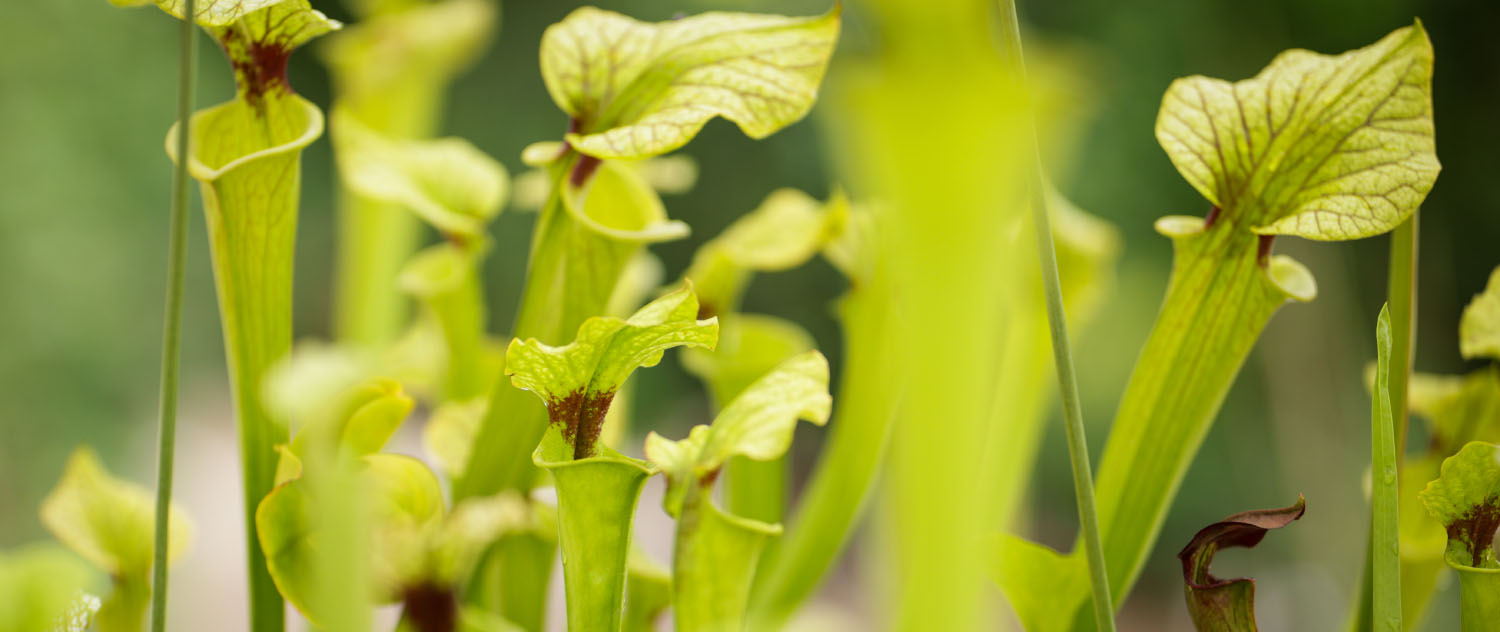Botanical Garden of Florence
Carnivorous
Introduction | Acquatic | Citrus fruits | Trees | Wild edible plants | Araceae family | Wild shrubs | Begonias | Bromeliads | Carnivorous | Cycads | Grasses | Medicinals | Tropical orchids | Palms | Pteridophytes | Roses | Serpentinophytes | Succulent plants | Exhibits
The collection includes more than 60 specimen belonging to 11 genera and 7 different families and it is housed in the Cold Greenhouse. Since some species have very high humidity and temperature needs, coming from tropical and subtropical areas, the set-up is modified in winter and the most demanding species are housed in the Araceae Greenhouse.
The carnivorous group includes all those species that live on nutrient-poor soils such as peat bogs; these plants have developed real traps to catch especially insects and other arthropods from which they extract nutrients. The aim of the collection is to provide visitors with a broad overview of the mechanisms (divided into active and passive) that these plants adopt to collect nutrients, especially nitrogen.
Passive trapping mechanisms include the 'fly-paper' traps of the genera Drosera and Pinguicola in which the plants are lined with glands that secrete acidic, viscous mucilage capable of imobilising small animals that land on them. Other passive mechanisms are the ascidium traps found in the genera Sarracenia, Cephalotus and Nepenthes, where the prey is caught inside a modified jug- or ampoule-shaped leaf. The insect slides towards the bottom of the funnel facilitated by the presence of downward-pointing hairs on the inner walls of the leaves, and the same hairs prevent the animal from climbing upwards. In the part of the funnel closest to the ground, smaller than the upper part of the leaf, the animal is trapped and is no longer able to get out , and once blocked it is 'digested' by the enzymes and/or bacteria present.
Active trapping mechanisms, on the other hand, are those of the snap traps of the genus Dionea, where the plants catch their prey with a quick movement of the leaves, triggered by the stimulation of specific hairs on the leaf surface. Finally, there are carnivorous plants adapted to aquatic life, such as those belonging to the genus Utricularia, where the prey is sucked in by a bladder-like structure, the utricle, inside which a pressure vacuum is generated.
Photos


